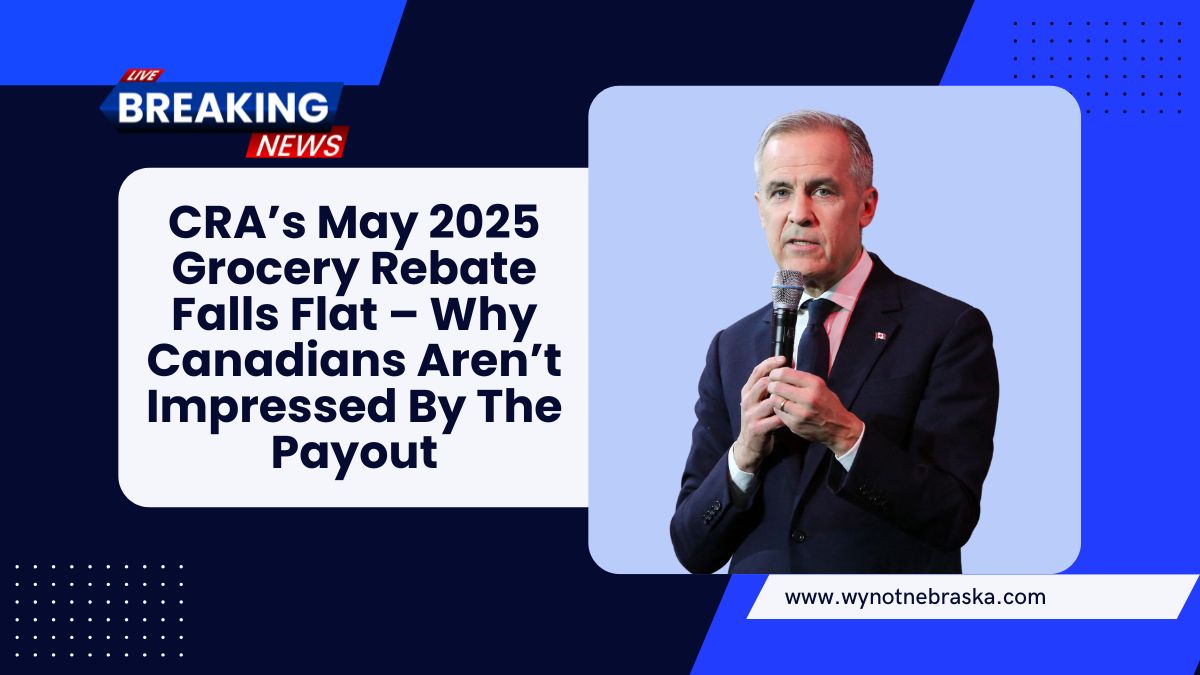In May 2025, the Canada Revenue Agency (CRA) issued a one-time Grocery Rebate to provide financial support to eligible low- and modest-income Canadians.
The payment was intended to ease the burden of rising grocery prices, but for many households, the relief felt underwhelming and out of step with real-world needs.
Despite being marketed as a meaningful intervention against food inflation, the program drew criticism for its limited scope, outdated eligibility criteria, and inadequate amounts. Here’s a detailed look at what the rebate offered—and why many Canadians were left unimpressed.
What Was the May 2025 Grocery Rebate?
The Grocery Rebate was a government-backed initiative issued as a top-up to the GST/HST credit. It was automatically deposited into the accounts of Canadians who met the eligibility requirements, providing a one-time financial boost based on income level and family size.
Grocery Rebate Payment Structure
| Family Type | Maximum Rebate Amount |
|---|---|
| Single (no children) | $234 |
| Single + 1 child | $387 |
| Single + 2 children | $467 |
| Single + 3 children | $548 |
| Single + 4 children | $628 |
| Married/Common-law (no kids) | $306 |
| Married + 1 child | $387 |
| Married + 2 children | $467 |
| Married + 3 children | $548 |
| Married + 4 children | $628 |
The rebate was deposited directly into the recipient’s bank account, mirroring the GST/HST credit method of payment. However, the impact was short-lived.
Why Many Canadians Were Disappointed
1. The Rebate Didn’t Match Real Grocery Costs
For many Canadians, the cost of a single grocery trip now far exceeds $200. As inflation continues to drive up prices on essentials like meat, vegetables, and dairy, a one-time payment of $234 to $628 barely scratched the surface.
2. It Was a One-Time Payment
Rather than providing ongoing monthly support, the Grocery Rebate was issued just once. Many households, already stretched thin, were hoping for repeated installments or monthly grocery subsidies, not a single payout.
3. Eligibility Was Based on 2021 Tax Returns
The CRA determined eligibility based on 2021 income data, which excluded many people who have since fallen into financial hardship. Workers who lost jobs in 2023 or 2024 were often left out because their older income records showed them as ineligible.
Public Reaction and Frustration
The frustration among Canadians was widespread. Social media and community discussions echoed sentiments such as:
- “It covered half a week’s groceries at best.”
- “Too little, too late.”
- “Why use 2021 income when it’s already 2025?”
This disconnect between the reality of economic pressures and the government’s perceived relief effort only added to public dissatisfaction.
What Other Support Is Available?
While the Grocery Rebate was limited, other forms of government support continue to assist eligible households, including:
- GST/HST credits
- Canada Child Benefit (CCB)
- Old Age Security (OAS) and GIS
- Provincial housing or utility rebates
Still, many critics argue that a dedicated, recurring grocery allowance would be more impactful in addressing persistent food insecurity.
The May 2025 Grocery Rebate, while intended to provide relief, fell short of expectations for many Canadians. With rising food prices, stagnant wages, and limited government intervention, a one-time payment wasn’t enough to deliver meaningful financial relief.
The program highlights a growing need for modernized eligibility assessments, more frequent payments, and targeted support that better reflects the cost of living today. Until then, millions of Canadians will continue to stretch every dollar just to put food on the table.
FAQs
Who was eligible for the May 2025 Grocery Rebate?
Anyone who qualified for the January 2023 GST/HST credit based on their 2021 income tax return was eligible. No re-application was required.
Will there be more grocery rebates in 2025?
There are currently no confirmed additional payments. However, future rebates may be introduced depending on economic trends and public demand.
What should I do if I didn’t receive the rebate?
Eligible individuals should check their CRA account or contact CRA directly to review their eligibility and payment status.
